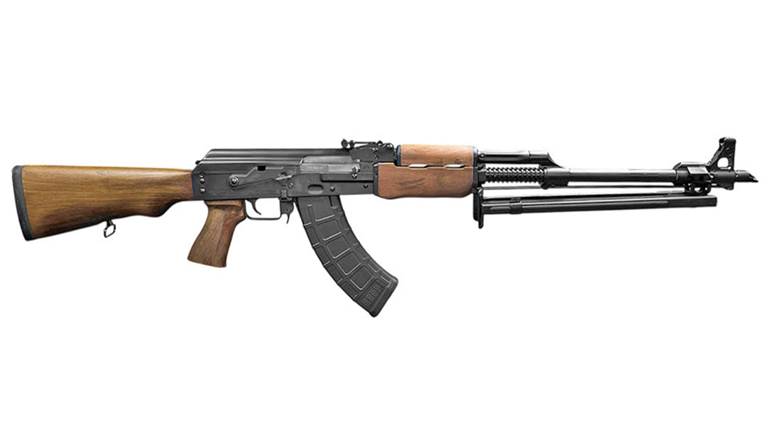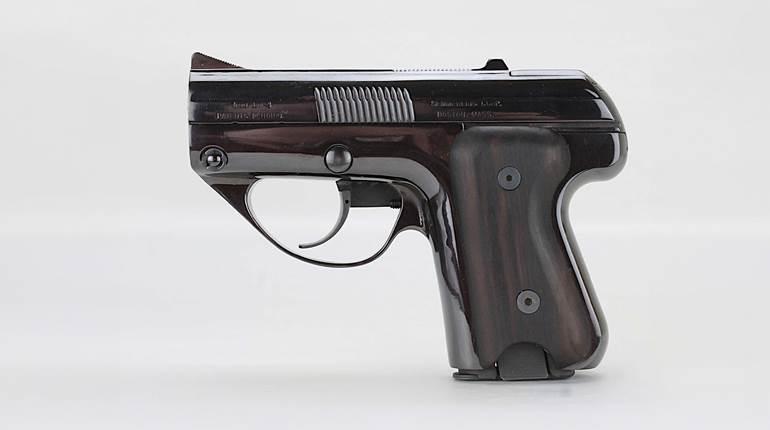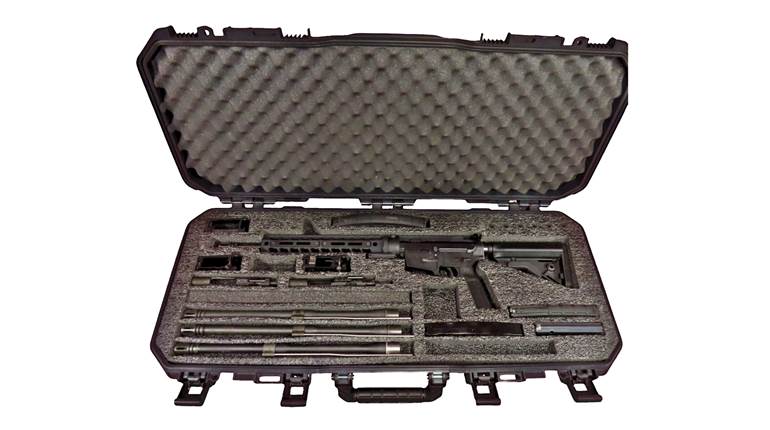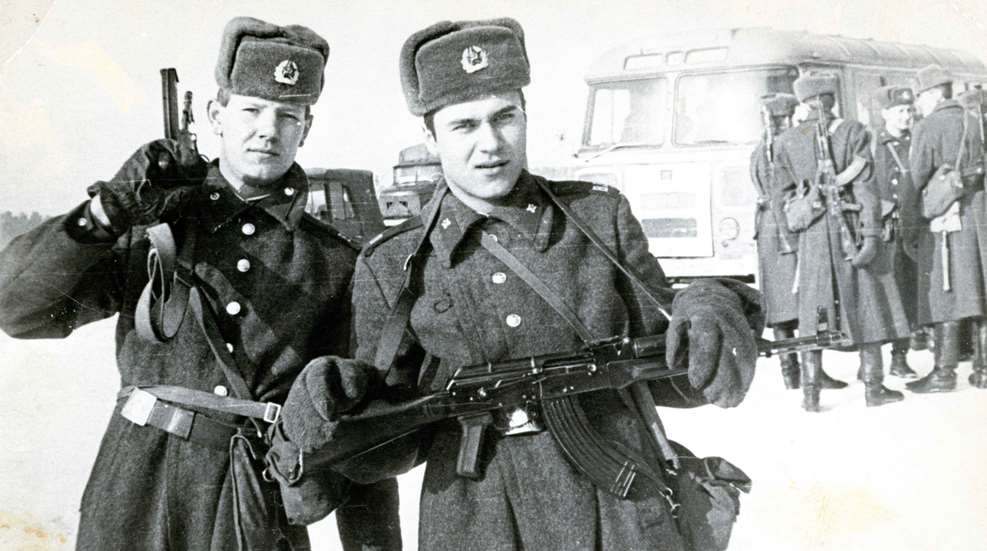
The mistake happens constantly. More so than with any other firearm, Kalashnikov-type rifles tend to be misidentified. Despite the fact that the world of the Kalashnikov is diverse and complicated, they all tend to be lumped-together and referred to as “AK-47s.” Whenever news coverage from a foreign conflict zone shows militants armed with rifles using curved magazines, reporters identify them as AK-47s regardless of their model designation and/or country of origin. This tendency toward misidentification overlooks one model more than any other: the AKM.
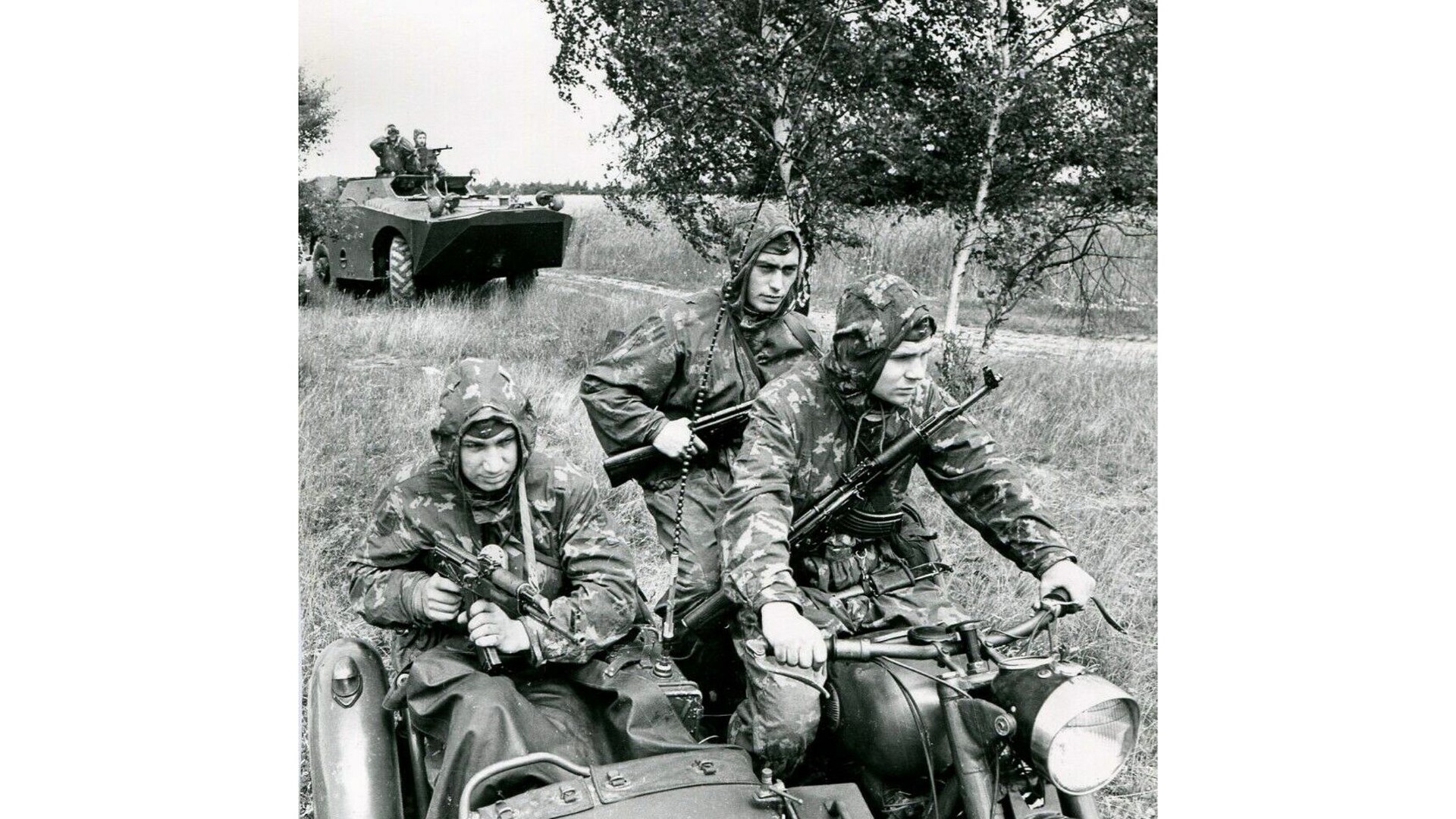 Soviet mechanized troops armed with the AKM—the most ubiquitous firearm the world has ever known. Image courtesy of Tom Laemlein.
Soviet mechanized troops armed with the AKM—the most ubiquitous firearm the world has ever known. Image courtesy of Tom Laemlein.
In fact, more often than not, the rifle identified as being an AK-47 is usually an AKM. It entered service under Khrushchev and is still fighting in the era of Putin. It is the most common select-fire rifle in the world today, and it can be seen arming Wagner Group mercenaries in the Central African Republic, Ukrainian volunteers in Kiev and Hamas terrorists attacking Kibbutz Be'eri in the Negev desert near the eastern border with the Gaza Strip.
It was born of a need to expand Kalashnikov production at a time when Soviet influence was spreading, and its introduction sacrificed nothing in terms of the design’s reputation for reliability. It took the existing AK-47 and, through a series of product improvements, made it a better fighting rifle. And because it could be produced faster and more affordably, the Soviet Union could incorporate it in a broader Cold War strategy by which military aid would spread Moscow’s political and economic influence across the decolonizing world. But how did the AKM come into existence, and what exactly makes it a better Kalashnikov than the AK-47?
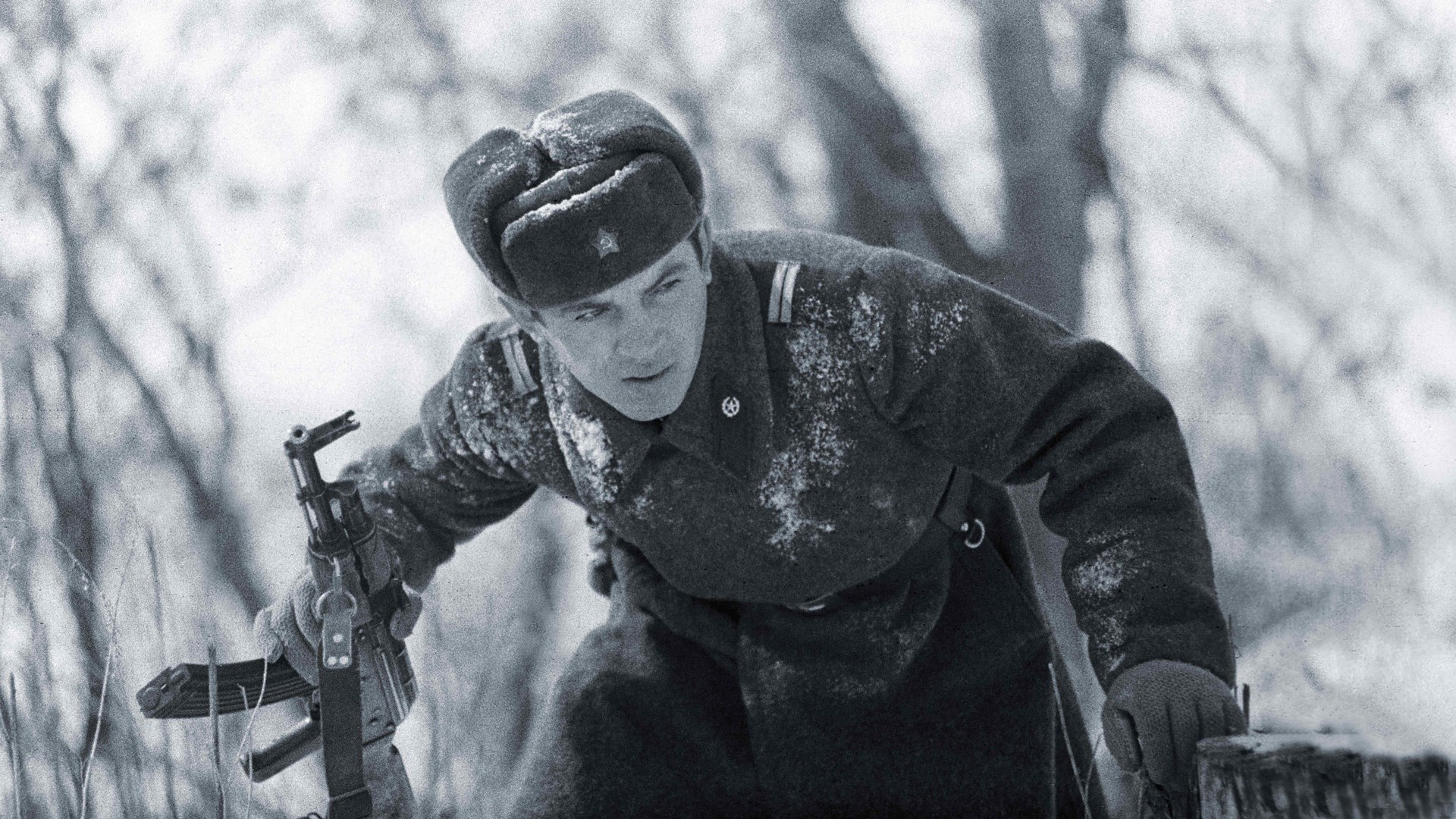 Hero of the Soviet Union Junior Sergeant Yuri Babansky who distinguished himself during the Sino-Soviet border conflict of 1969. He is seen here armed with an AKM. Image courtesy of Tom Laemlein.
Hero of the Soviet Union Junior Sergeant Yuri Babansky who distinguished himself during the Sino-Soviet border conflict of 1969. He is seen here armed with an AKM. Image courtesy of Tom Laemlein.
By 1959, production of the AK-47 had already evolved through three versions that each introduced design improvements. The first production Kalashnikov rifle, referred to as the Type I AK-47, incorporated a sheet metal receiver, wood furniture, the distinctive curved 30-round magazine and the general anatomy of the rifle we all know so well today.
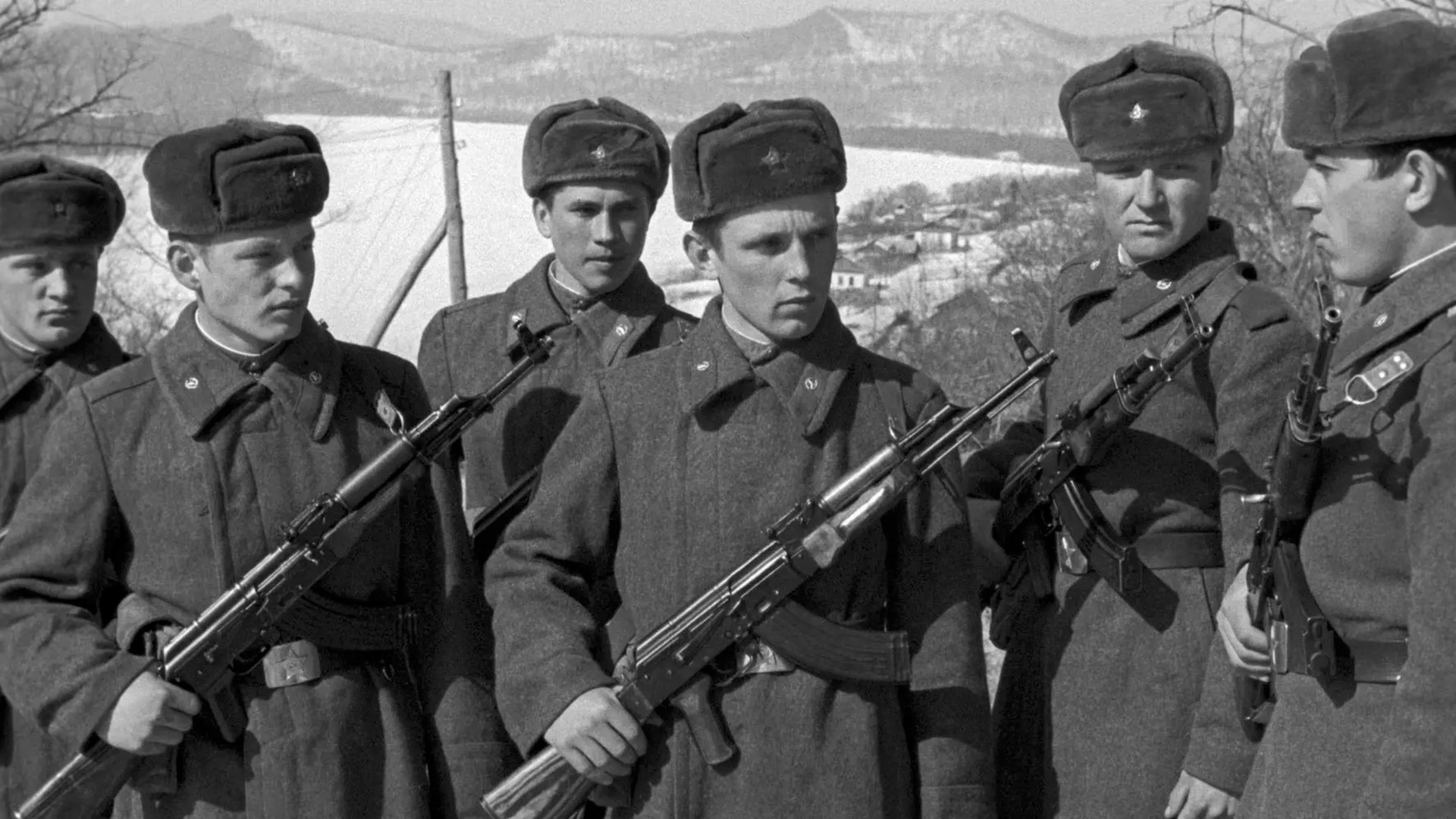 Soviet troops armed with the AKM seen here during the Sino-Soviet border conflict of 1969. Image courtesy of Tom Laemlein.
Soviet troops armed with the AKM seen here during the Sino-Soviet border conflict of 1969. Image courtesy of Tom Laemlein.
The Type II went into production in 1951 and changed the design to a milled solid steel receiver that carried over to the Type III when it went into production in 1953. That version also relocated the sling attachment points, introduced a chrome-lined barrel, and attached a pair of buttstock tangs directly to the receiver.
By the time that the Type III went into production, the political and economic realities of the Eastern Bloc had begun to change as a result of the establishment in May 1955 of the Warsaw Pact collective security agreement. Although it incorporated seven other member nations, the Soviet Union was the spiritual and ideological driving force behind the pact, and it therefore exerted the dominant influence over the process of standardizing military equipment. With that being the case, the Soviet Kalashnikov was the obvious choice for arming Warsaw Pact forces.
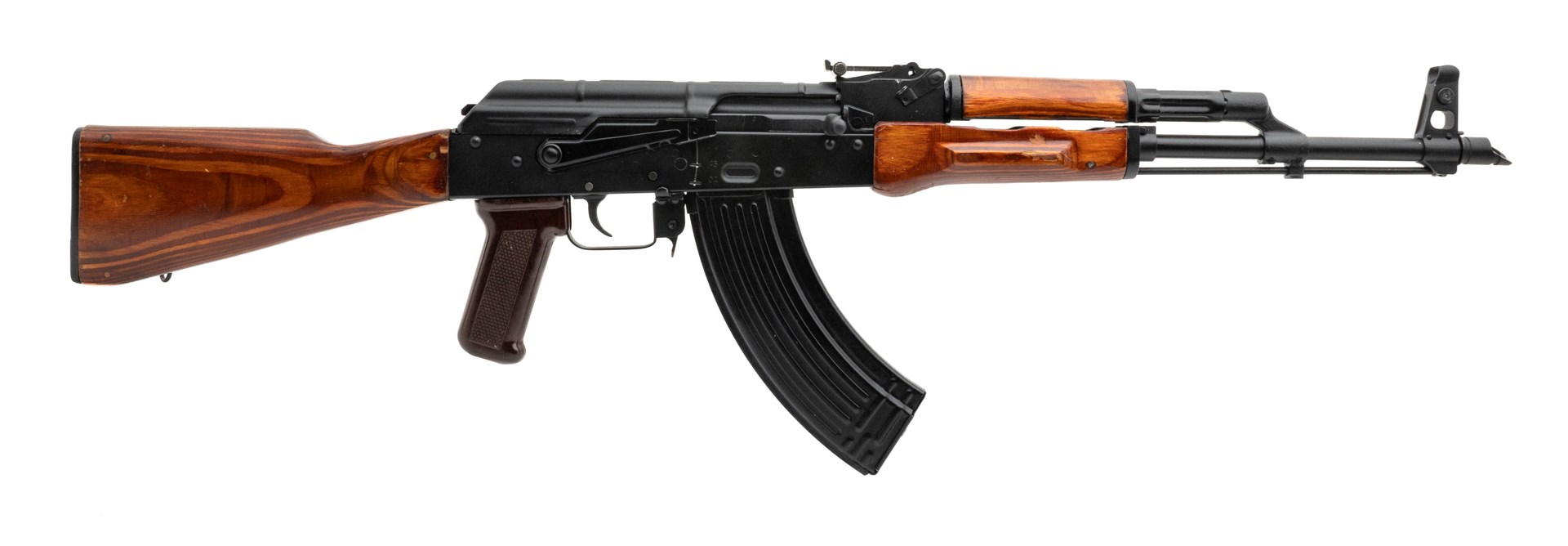 Right-side view of a 1973 Tula AKM semi-automatic kit built using a Childers receiver. Image courtesy of Jeff Hallinan of Collectors Firearms in Houston, Texas.
Right-side view of a 1973 Tula AKM semi-automatic kit built using a Childers receiver. Image courtesy of Jeff Hallinan of Collectors Firearms in Houston, Texas.
While it was arguably the finest modern military rifle in the world at the time, the Type III was less than ideal as a candidate for licensed mass production outside of Mother Russia. The Hungarians and Poles proved that its milled receiver could be executed by other countries, but just not quickly enough to reach the production levels that would be required to arm the millions of Warsaw Pact troops who would one day have to fight NATO. They needed a lighter, simplified rifle that could be more easily mass produced by the various Soviet Socialist Republics—one that would provide the Communist Bloc with a critical advantage in the Cold War arms race.
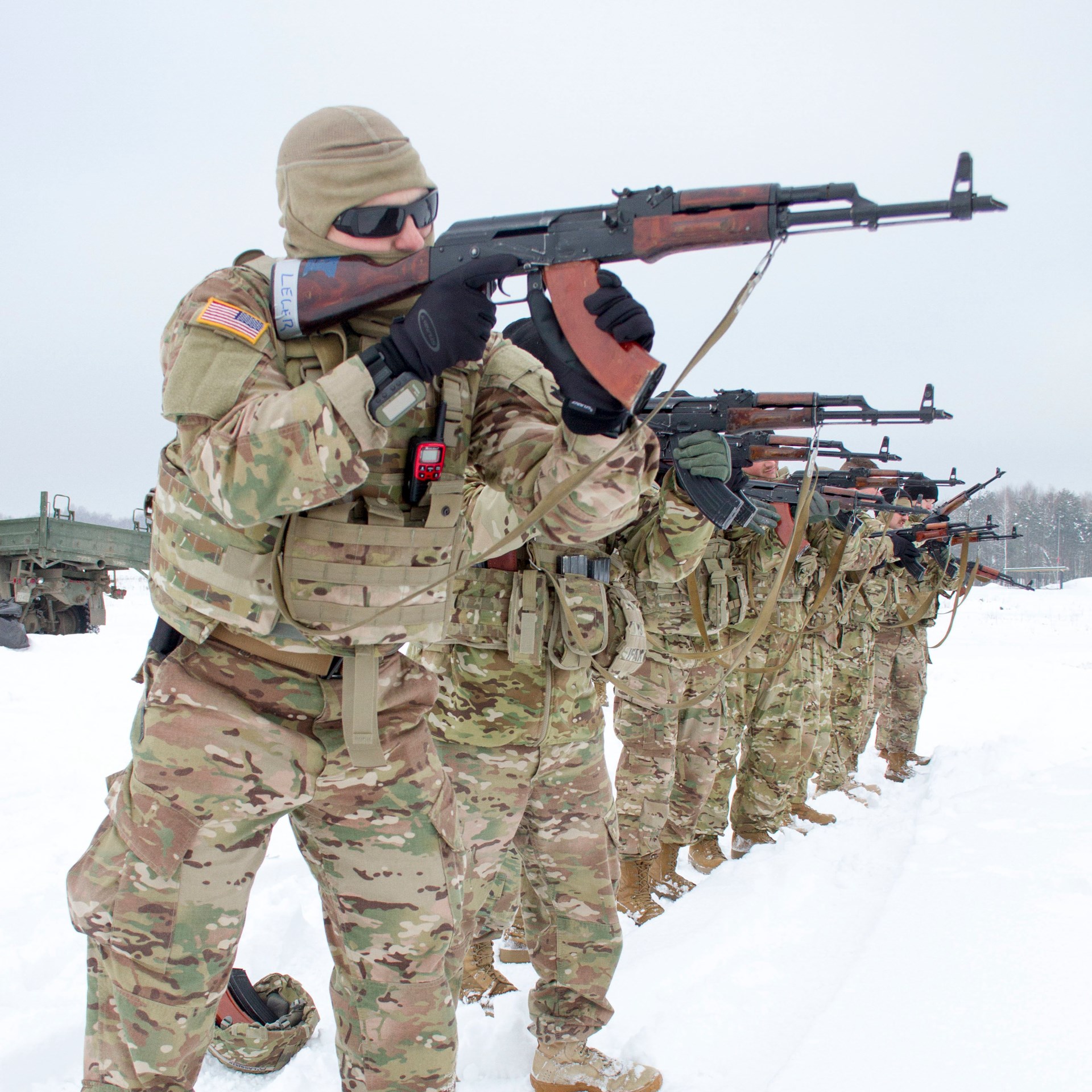 Soldiers of Company A, 1st Battalion, 179th Infantry Regiment, 45th Infantry Brigade Combat Team practice proper handling and reloading of the AKM rifle before firing it as part of instructor standardization training at the International Peacekeeping and Security Center, near Yavoriv, Ukraine, on Jan. 19, 2017. Photograph by Sgt. Anthony Jones, 45th Infantry Brigade Combat Team.
Soldiers of Company A, 1st Battalion, 179th Infantry Regiment, 45th Infantry Brigade Combat Team practice proper handling and reloading of the AKM rifle before firing it as part of instructor standardization training at the International Peacekeeping and Security Center, near Yavoriv, Ukraine, on Jan. 19, 2017. Photograph by Sgt. Anthony Jones, 45th Infantry Brigade Combat Team.
While the Type II AK-47 was still in production, a Russian firearms designer working at Tula Arsenal named German Aleksandrovich Korobov introduced an innovative assault rifle designated ТКБ-517. Chambered for the 7.62x39 mm cartridge and designed to feed from the Kalashnikov 30-round double-stack/double-feed magazine, it was easier to control in full auto than the AK-47 because of its lever-delayed blowback operating mechanism.
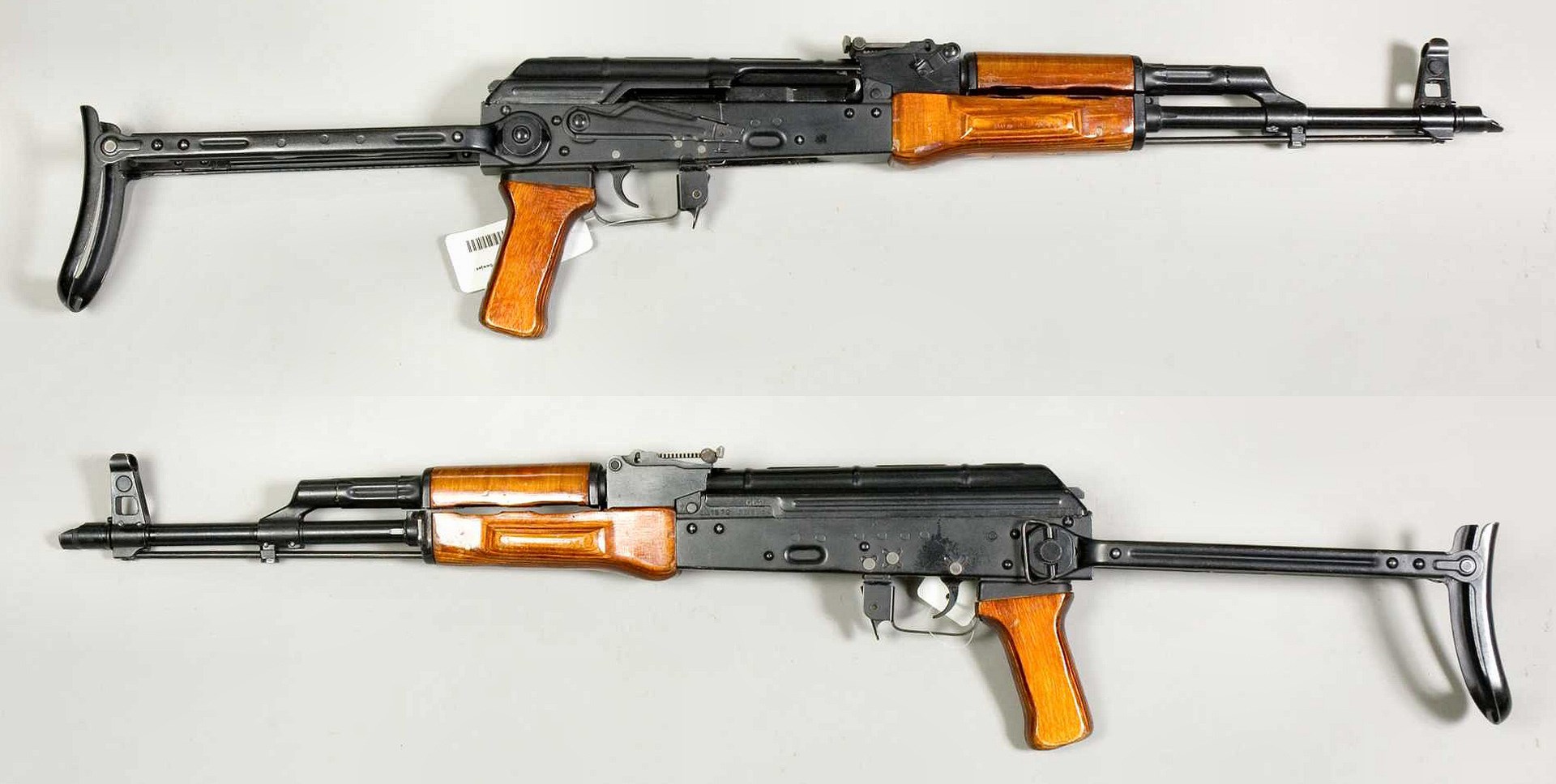 A 1972 Izhévsky mashinostroítelny Zavod (IZhMASh) AKMS from the collections of the Swedish Army Museum, Stockholm, Sweden.
A 1972 Izhévsky mashinostroítelny Zavod (IZhMASh) AKMS from the collections of the Swedish Army Museum, Stockholm, Sweden.
A sheet-metal receiver made it significantly lighter than the Type III AK-47 and, although the Russians never did adopt it, the ТКБ-517 did make them realize that there was room for improvement. Toward that end, in 1957 the Red Army held a competition that evaluated three new designs: one from the Tula Arsenal, one from the Kovrov Arsenal and one from the team at Izhévsky Mashinostroítelny Zavod (IZhMASh) headed by Mikhail Kalashnikov.
 Left-side view of a 1970 Izhévsky mashinostroítelny Zavod (IZhMASh) AKM. Image courtesy of author.
Left-side view of a 1970 Izhévsky mashinostroítelny Zavod (IZhMASh) AKM. Image courtesy of author.
The IZhMASh submission—essentially a “modernized” Kalashnikov rifle—presented the same general aesthetic as the Type III AK-47 but with a few changes. In it, the IZhMASh team incorporated lessons learned from the first decade of production of the rifle while simultaneously preserving the same cyclic rate of fire, the same barrel length, the same rifling twist rate and, therefore, the same external ballistics and effective range. The new gun was still a gas-operated, select-fire rifle using a long-stroke gas piston, so neither the basic form nor the basic function materially changed. It did, however, bring back the stamped-sheet-metal receiver that Kalashnikov had initially designed for his rifle in 1947.
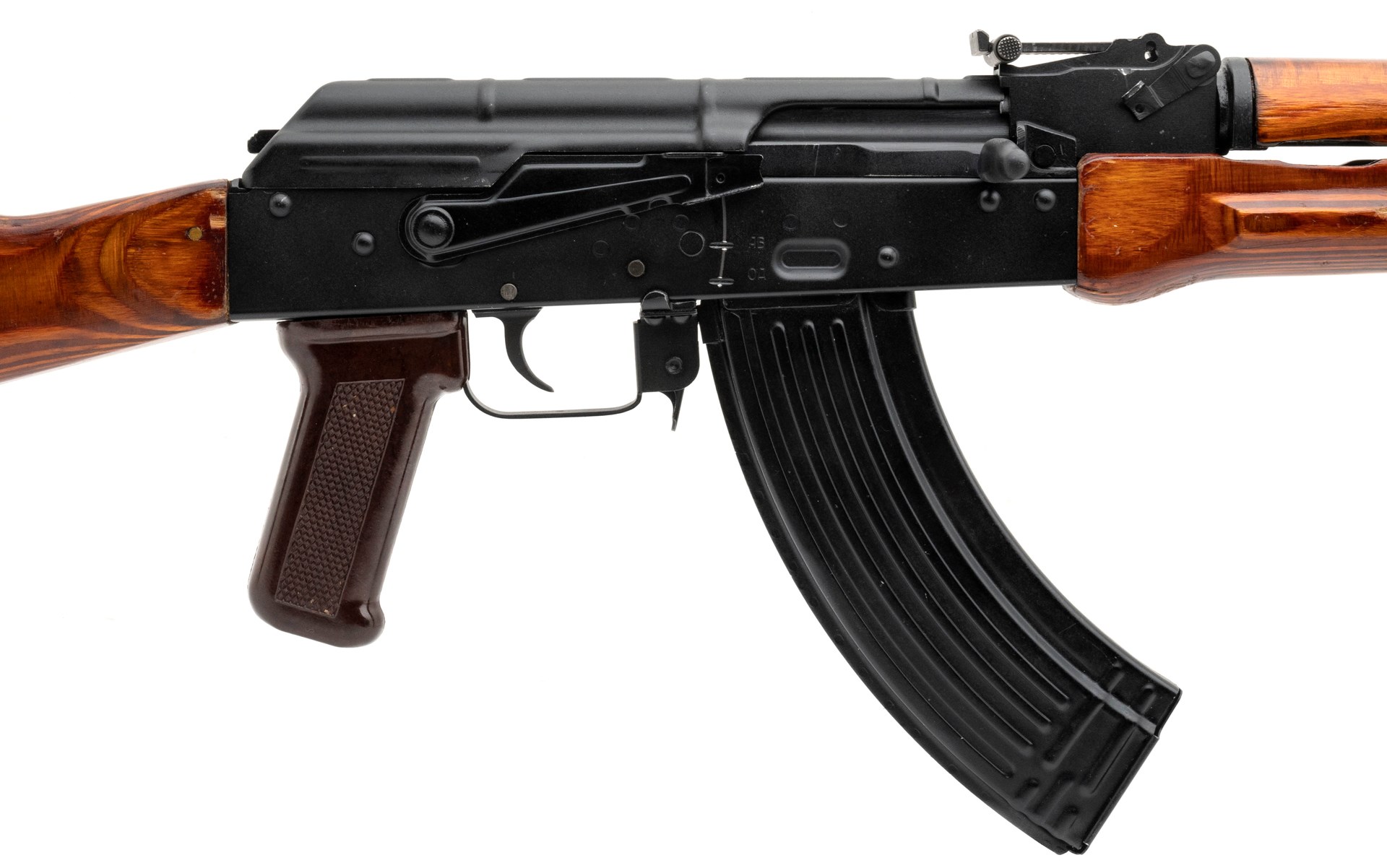 Right-side close-up of a 1973 Tula AKM semi-automatic parts kit built using a Childers receiver. Image courtesy of Jeff Hallinan of Collectors Firearms in Houston, Texas.
Right-side close-up of a 1973 Tula AKM semi-automatic parts kit built using a Childers receiver. Image courtesy of Jeff Hallinan of Collectors Firearms in Houston, Texas.
Between the Type I and the Type III, the Soviets improved their ability to turn out precision-stamped components, so the time was right to return to that production method. The new Type IV receiver was made of 1 mm-thick sheet steel that was riveted to a milled steel front trunnion into which the barrel was pressed and pinned. A milled-steel rear trunnion with one tang accommodated attachment of a radically redesigned buttstock. It was still made of birch plywood laminate-finished with VK-1 nitrocellulose lacquer like the Type III, but the new version had a less pronounced downward sweep than its predecessor. All metallic parts on the gun were finished in a non-reflective, matte-black paint applied over zinc oxide phosphate.
Because the new Kalashnikov’s front sight base was narrower than that of the Type III’s, the bayonet lug moved to the gas block, and a retaining lug for the cleaning rod took its place. A stamped dustcover with strengthening ribs replaced the Type III’s milled dustcover, and the trigger was changed from a double-hook to a single-hook. The new rifle’s gas-tube design deleted the ventilation holes that were present in the three previous AK models, and the position of the rear sling swivel moved from the left rear of the receiver to the toe of the buttstock.
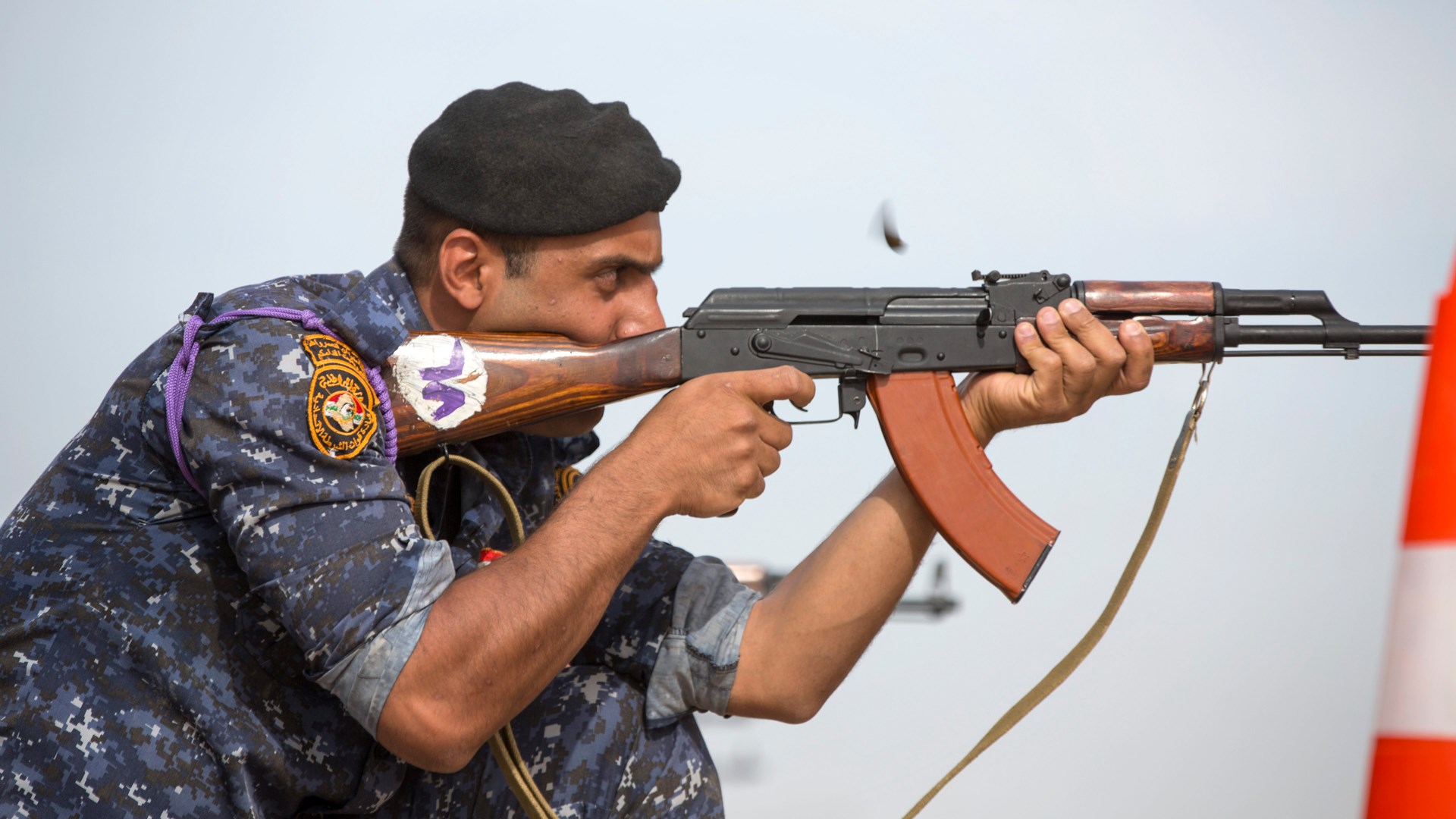 A member of the Iraqi security forces fires an AKM during short-range marksmanship training led by Spanish Guardia Civil at the Besmaya Range Complex, Iraq, on May 23, 2017. U.S. Army photograph by Cpl. Tracy McKithern.
A member of the Iraqi security forces fires an AKM during short-range marksmanship training led by Spanish Guardia Civil at the Besmaya Range Complex, Iraq, on May 23, 2017. U.S. Army photograph by Cpl. Tracy McKithern.
In addition to the objective of making production of the rifle more economical, Kalashnikov was also challenged to make his updated design lighter and more controllable in full-auto. The use of sheet metal for the receiver and the dustcover, a thinner profile barrel and lightening cuts in the bolt carrier reduced the gun’s weight from 9 lbs. to 7 lbs. To prevent any increase in the 600-round-per-minute rate of fire of the earlier variants that might have resulted from the reduced mass of the modified bolt carrier, a new rate-reducing mechanism was added to the rifle’s fire-control components. This alone meant that the lighter “modernized” Kalashnikov would be no more difficult to control in full-auto than the older, heavier Type III Kalashnikov. Additionally, it was slightly easier to hold onto, thanks to the new palm swells added to both sides of the wooden handguard.
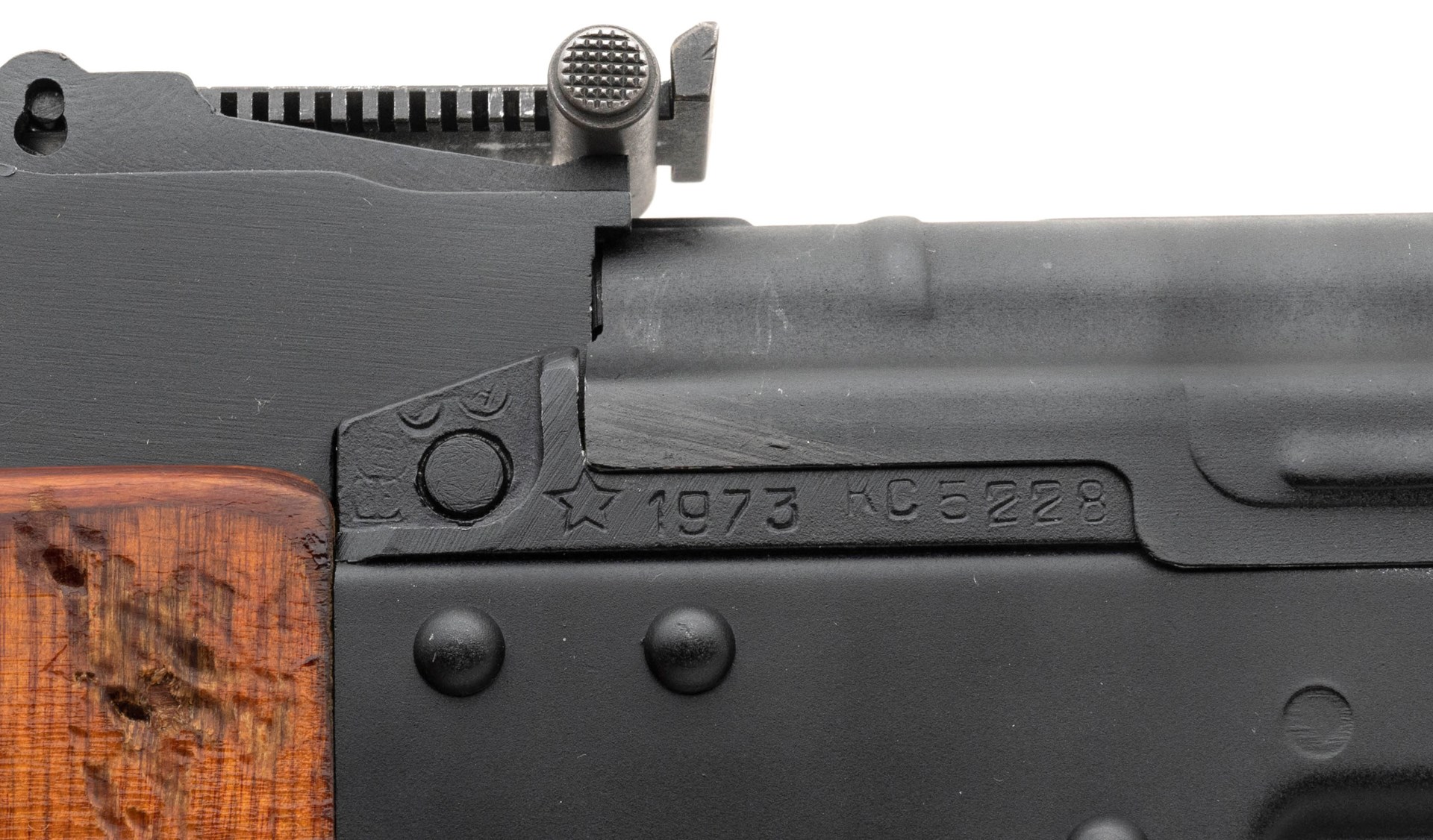 Left-side close-up of the front trunnion markings on a 1973 Tula AKM semi-automatic parts kit built using a Childers receiver. Image courtesy of Jeff Hallinan of Collectors Firearms in Houston, Texas.
Left-side close-up of the front trunnion markings on a 1973 Tula AKM semi-automatic parts kit built using a Childers receiver. Image courtesy of Jeff Hallinan of Collectors Firearms in Houston, Texas.
Upon adoption in 1959, it received the official designation Автомат Калашникова модернизированный, (Avtomat Kalashnikova modernizirovanny) or AKM, but its development did not stop there, and the design continued to evolve even as mass production shifted into high gear. After a few years, a distinctive Bakelite pistol grip replaced the wooden pistol grip of the previous models. Then in 1966, to provide even more controllability during full-auto fire, the now familiar slant brake muzzle device replaced the original muzzle nut used on the AK-47. In 1971, a cast gas block was introduced that could be produced more quickly and cheaply than the machined version of the part that had been in service for nearly a quarter of a century.
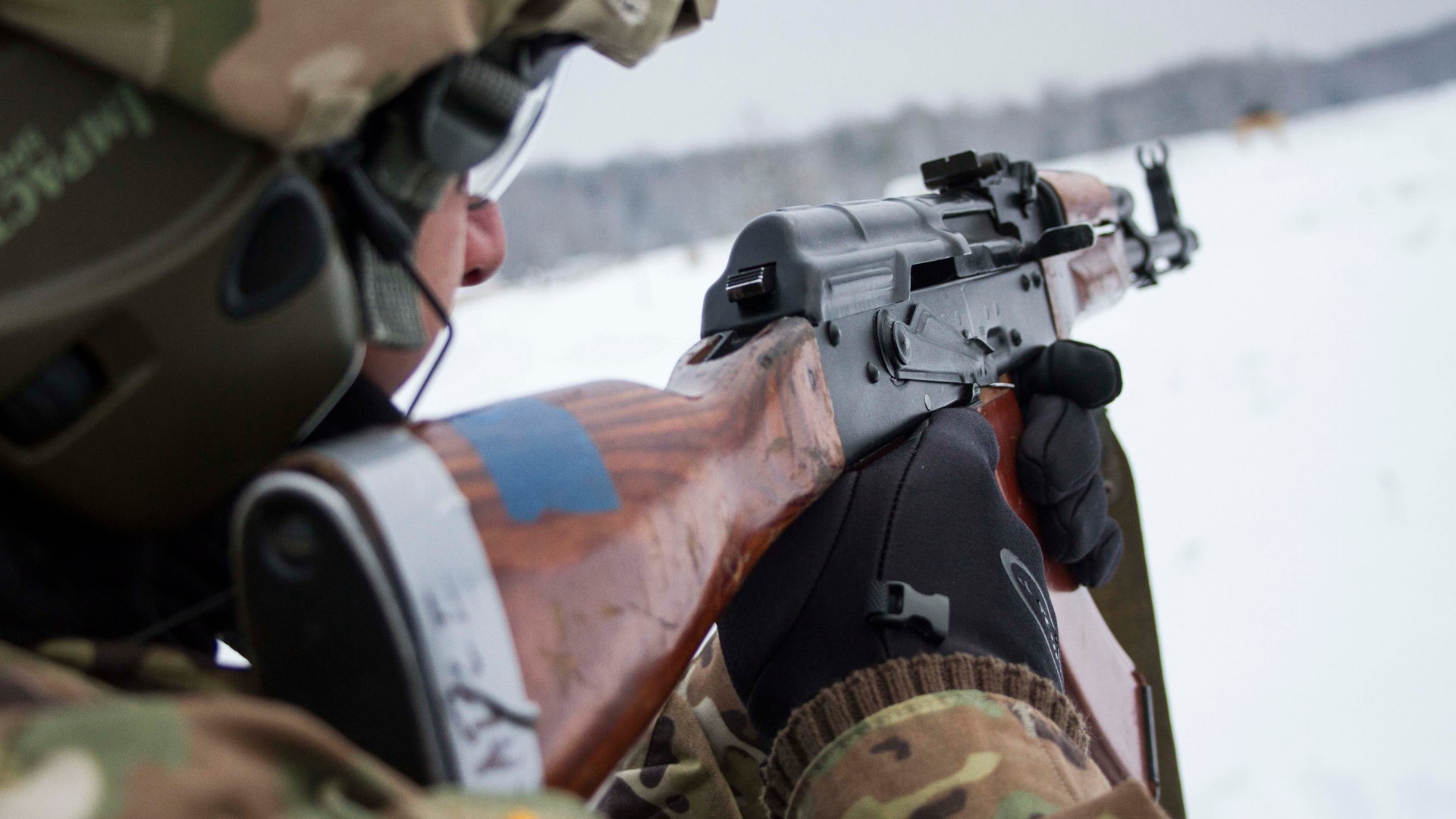 Staff Sgt. Uriah Gibson of Mustang, Oklahoma looks down the sights of an AKM during instructor standardization training at the International Peacekeeping and Security Center, near Yavoriv, Ukraine, on January 19, 2017. Image by Sgt. Anthony Jones, 45th Infantry Brigade Combat Team.
Staff Sgt. Uriah Gibson of Mustang, Oklahoma looks down the sights of an AKM during instructor standardization training at the International Peacekeeping and Security Center, near Yavoriv, Ukraine, on January 19, 2017. Image by Sgt. Anthony Jones, 45th Infantry Brigade Combat Team.
The lower handguard retainer with its sling attachment point also became a casting around this time, and the rear sling swivel moved again—this time from the bottom of the buttstock near the toe to the left side of the buttstock near the toe. Then in 1972, spring clips were added to either side of the handguard to prevent it from rattling. Also, the profile of the dustcover stamping was modified to incorporate a flare at the rear end of the ejection port, lightening cuts were added to the front-sight base and the profile of the rear trunnion changed as well. By that point, the design had been tweaked to perfection, and mass production was in overdrive.
 Right-side view of a 1970 Izhévsky mashinostroítelny Zavod (IZhMASh) AKM. Image courtesy of author.
Right-side view of a 1970 Izhévsky mashinostroítelny Zavod (IZhMASh) AKM. Image courtesy of author.
The AKM proved to be such a successful design that it ultimately became the most-produced Kalashnikov of them all. Between 1959 and 1977, Russia made more than 10 million examples in both the fixed-stock version and the AKMS underfolder. In addition to that, several Eastern Bloc nations produced AKM derivatives like the Hungarian AKM-63, the East German MPiKM and the Romanian PM md. 65.
This is what made the widespread proliferation of AKM-type rifles a reality during the closing decades of the Cold War, and this is also why the AKM reached across the threshold of the 21st century to play an important role in conflicts being fought today. Because it has been a central player in modern warfare for more than six decades, it has been referred to as “the enduring curse” of the Cold War era, and it will probably continue to be that for many decades to come.












